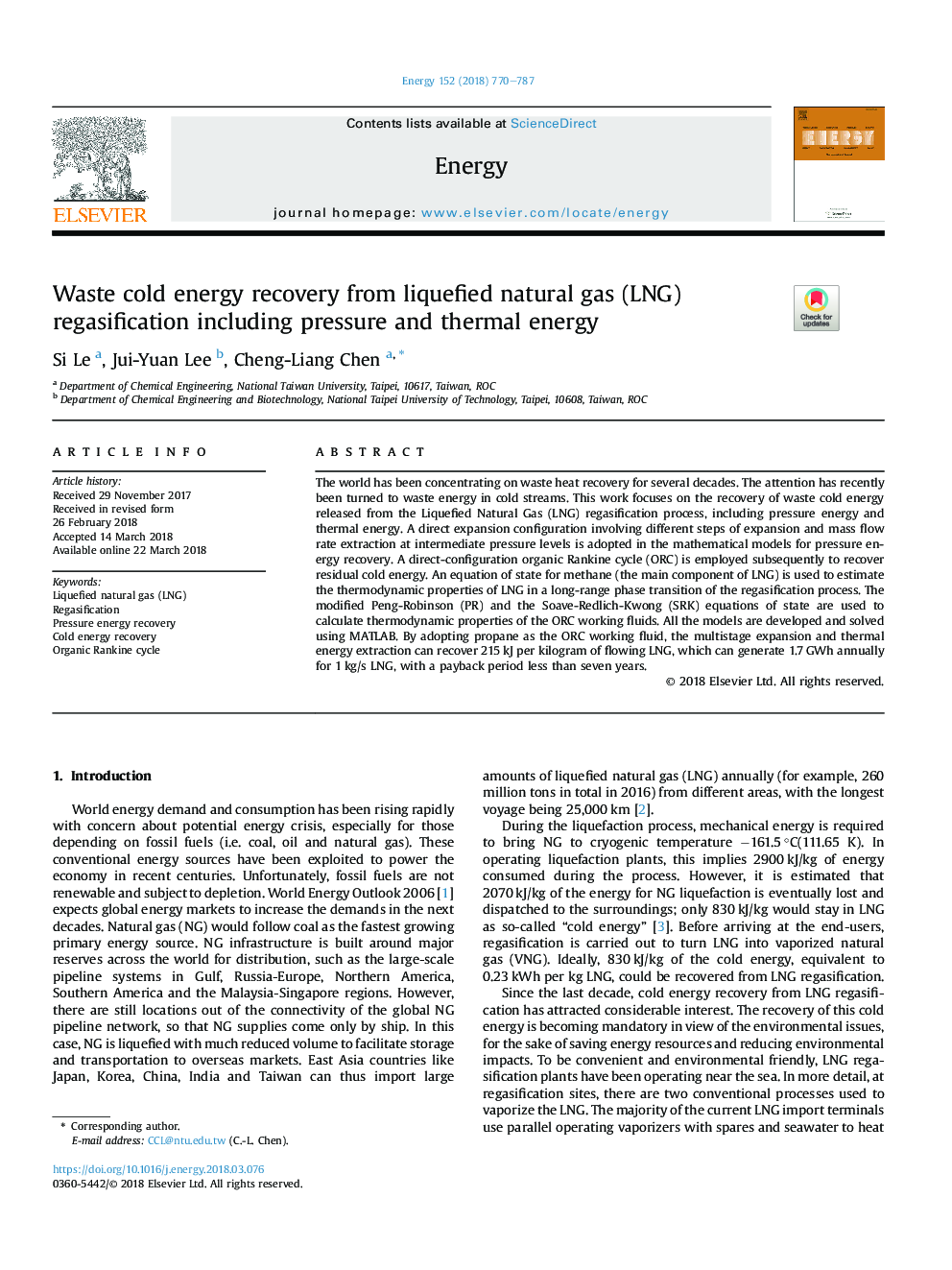| Article ID | Journal | Published Year | Pages | File Type |
|---|---|---|---|---|
| 8071726 | Energy | 2018 | 18 Pages |
Abstract
The world has been concentrating on waste heat recovery for several decades. The attention has recently been turned to waste energy in cold streams. This work focuses on the recovery of waste cold energy released from the Liquefied Natural Gas (LNG) regasification process, including pressure energy and thermal energy. A direct expansion configuration involving different steps of expansion and mass flow rate extraction at intermediate pressure levels is adopted in the mathematical models for pressure energy recovery. A direct-configuration organic Rankine cycle (ORC) is employed subsequently to recover residual cold energy. An equation of state for methane (the main component of LNG) is used to estimate the thermodynamic properties of LNG in a long-range phase transition of the regasification process. The modified Peng-Robinson (PR) and the Soave-Redlich-Kwong (SRK) equations of state are used to calculate thermodynamic properties of the ORC working fluids. All the models are developed and solved using MATLAB. By adopting propane as the ORC working fluid, the multistage expansion and thermal energy extraction can recover 215â¯kJ per kilogram of flowing LNG, which can generate 1.7â¯GWh annually for 1â¯kg/s LNG, with a payback period less than seven years.
Related Topics
Physical Sciences and Engineering
Energy
Energy (General)
Authors
Si Le, Jui-Yuan Lee, Cheng-Liang Chen,
